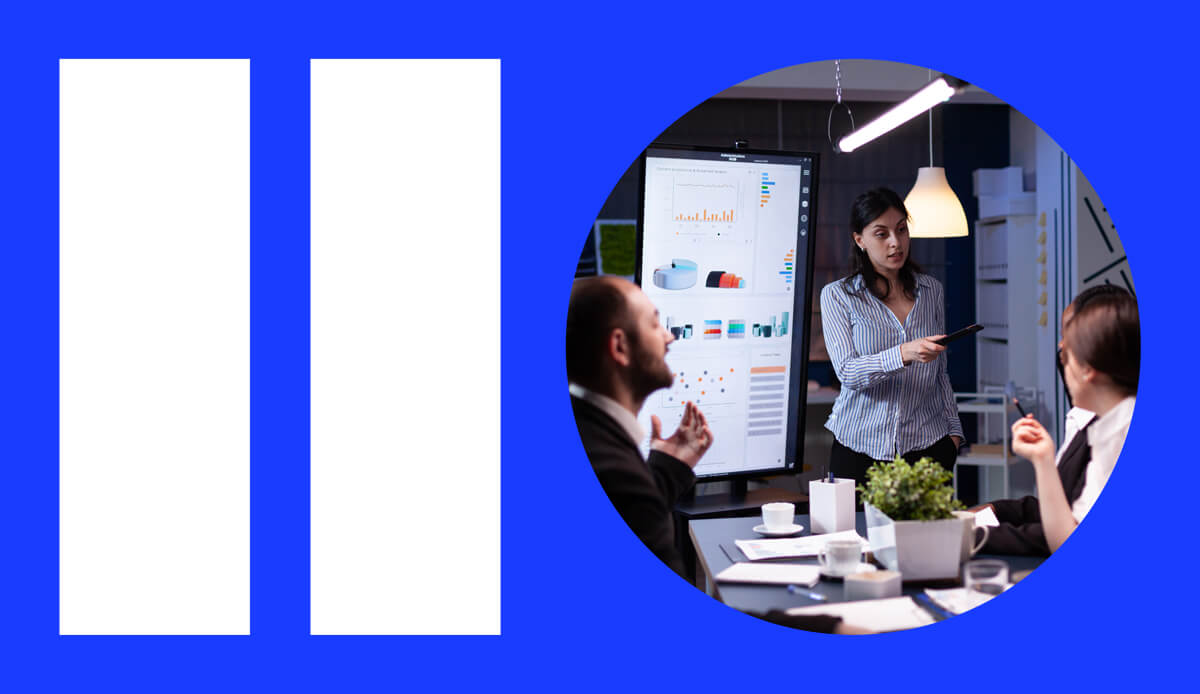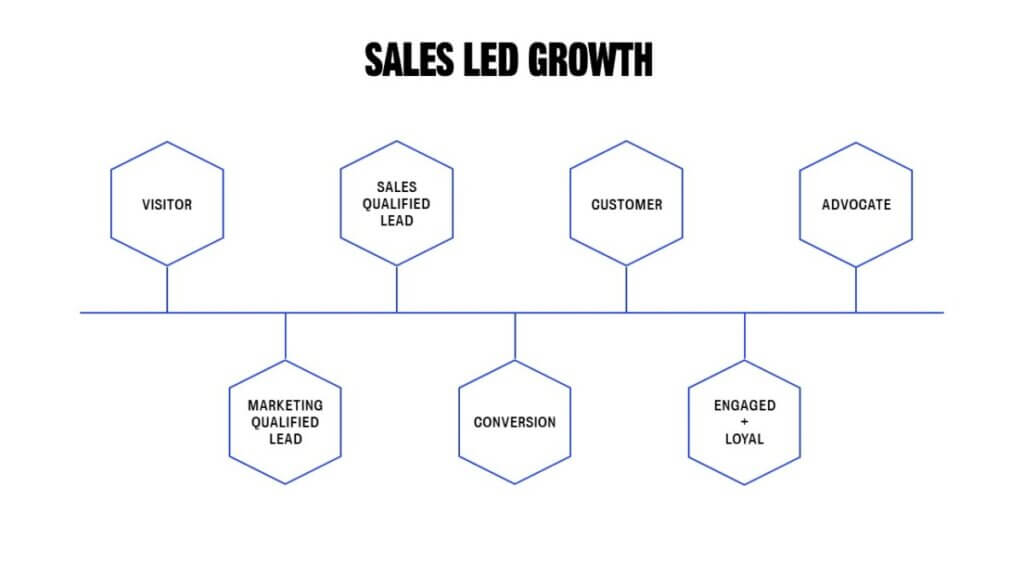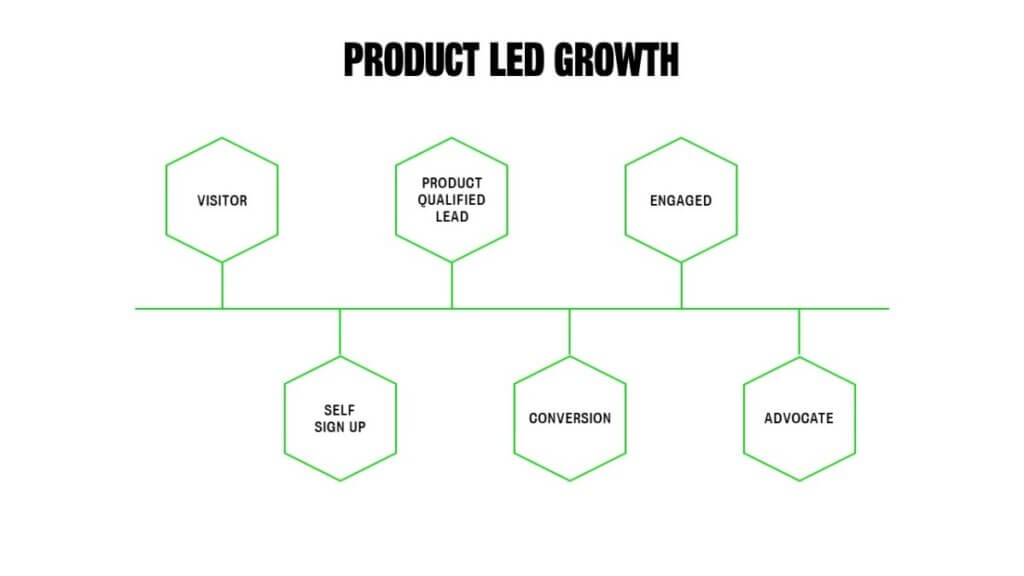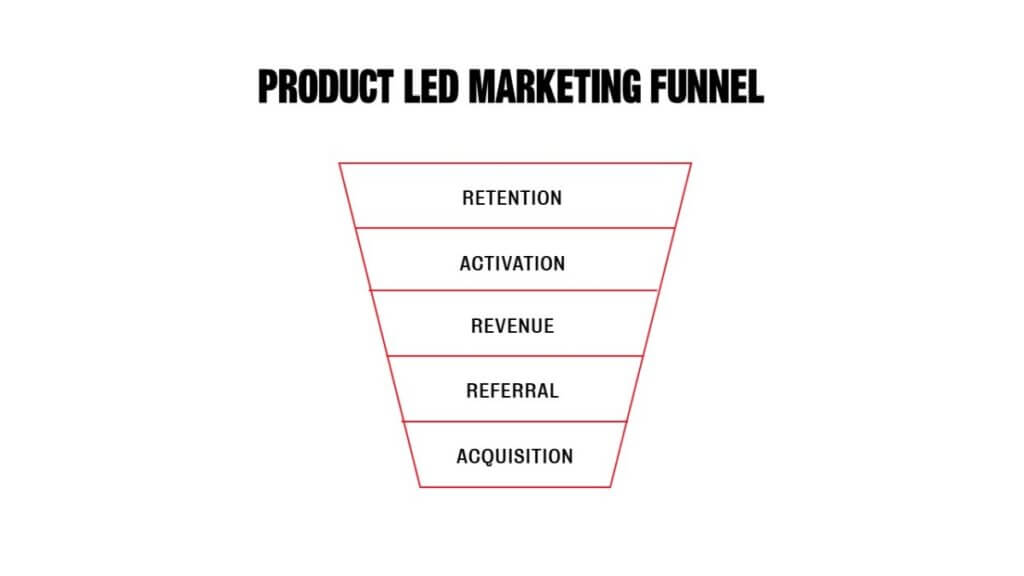
Product Led Growth (PLG) is a business growth methodology where the product is the primary asset that engages, attracts, acquires, and retains customers. Organisations that follow this model position the product as the principal driver of business growth and not the marketing or sales teams.
A traditional sales-led model would include the marketing and sales teams working in tandem to move a customer through the business funnel until they convert into a paying customer.
With Product Led Growth, however, the customer gets direct access to the product, which is tailored to nurture the customer down the sales funnel.
In this article, we’ll take an in-depth look at how Product Led Growth (PLG) works.
Why Product Led Growth is Ideal for SaaS Businesses Today
PLG is a model predominantly used by organisations offering software-as-a-service (SaaS) solutions. In fact, the term Product Led Growth was coined by Blake Bartlett after studying the growth of Datadog and Expensify, two SaaS companies.
Today’s competitive SaaS market has made it crucial for organisations to deliver value to customers as early in their research journey as possible. The longer it takes for a customer to experience value, the higher the chances of losing the customer to a competitor.
The sales-led model nurtures users through multiple stages of the sales funnel before they can access the product. This is where the PLG model shines – with product led marketing, users have direct access to the product from day one. Customers can therefore experience value much faster, making it easier for businesses to acquire users.
There are other benefits to the PLG model as well. Customers using the product on a trial basis can be considered a test group. Their activities and usage can be monitored to derive insights and improve the product.
The PLG model also allows you to create a potential user database more easily than traditional models. Every user who signs up for a demo gives you their personal information that can be used to run retargeting campaigns in the future, making it easier to implement product led marketing strategies.
These benefits don’t just allow SaaS organisations to compete in a fierce market; they also make it easier for users to select the right platform for their business faster, making it a win-win situation.
Successful Product Led Companies
#1 Asana
Asana is a collaboration and project management tool that helps teams organise and track their work. It allows users to create tasks, set priorities, assign responsibilities, and monitor project progress.
How Asana uses the PLG model
Asana strongly depended on product-led growth by offering a freemium model to its customers from day one. They nurtured a user community, relying on customer feedback and A/B testing new product features to improve their offering. This eventually translated to word-of-mouth referrals and played a key role in growing their customer base.
#2 Slack
If you need a success story for the PLG model, Slack is it.
Slack is a collaboration platform which can be used for messaging, file sharing, calls and video conferencing. Slack grew its revenue from $30 million in 2015 to $902 million in 2021.
How Slack uses the PLG model
Slack offers a free plan that does not have a user limit, and this is one of the key features that lead to growth. As people join the platform, Slack inadvertently becomes the official messaging platform for the business.
#3 Calendly
Calendly is an appointment scheduling platform. It integrates with a lot of popular platforms like Slack, Shopify, etc., making it the go-to calendar app for most businesses. Calendly’s user base grew from 4 million users in 2019 to 10 million users in 2022.
How Calendly uses the PLG model
By offering its core features for free, Calendly hooks users into making it their official time management app. Here’s the beauty of Calendly’s growth strategy – every time you schedule an appointment, all people involved get a Calendly link to join the meeting. This promotes Calendly to your contacts for free!
#3 Figma
Figma is a design and prototyping tool used predominantly for UI and UX design, although it also has other uses like graphic design. Figma created a lot of buzz as one of the fastest-growing startups. They increased their revenue from $75 million in 2020 to $400 million in 2022.
How Figma uses the PLG model
Figma leverages product led marketing and offers a free plan that designers can use to pretty much create complete designs and prototypes. They hacked the growth strategy when they implemented the collaboration feature into the free plan. This allowed teams to work on a single design together and enabled Figma to capture the design market.
Metrics to Measure Product Led Growth
As is the case with every other business model, tracking and measuring the right metrics is key to successfully implementing the PLG model. Here are a few important SaaS metrics to track in order to measure the impact of the PLG model.
- Acquisition – The number of users who sign up for a free trial.
- Acquisition Rate – The ratio of users who sign up against the number of users who viewed the product’s landing page.
- Conversion (Activation) – The number of users who purchased a paid plan.
- Conversion (Activation) Rate – The percentage of free trial users who converted into paying customers.
- Retention Rate – The percentage of users who continue to use the product (free or paid) every month.
- Expansion Revenue – Expansion revenue measures new revenue earned from existing customers via upsells, cross-sells, upgrades, add-ons, etc.
- Customer Churn – The percentage of users you lose over a given period.
- Revenue Churn – The revenue you would have earned if churned customers were retained.
- Customer Lifetime Value (CLV) – The net profit you can expect to earn from a customer throughout the relationship.
- Referral – The number of new users acquired as a result of a referral from an existing user.
Key Takeaways
- Product Led Growth (PLG) is a business methodology that relies on the product to acquire customers and scale the company rather than on marketing and sales teams. Long story short, the product scales the company.
- The PLG model usually involves offering a free demo or trial of the product. You then nurture the user towards becoming a paid customer via the product (using notifications, temporary access to locked features, etc.).
- The PLG model exposes the product to users much earlier in their purchase journey (right at discovery), making it easier for companies to pique interest and grow a user base.
Drive Value With Data Experts From M&C Saatchi Performance
The sales-led growth model is great for many businesses, but for domains like SaaS that are product based, the sales-led model is not ideal.
At M&C Saatchi Performance, we help companies adopt the PLG model across different stages of the customer journey. Specific services like App Store Optimisation, LTV Analysis, User Onboarding Optimisation, etc., help you deliver a product-first experience to your customers.
Contact Us to know how your product can leverage the Product Led Growth methodology.




